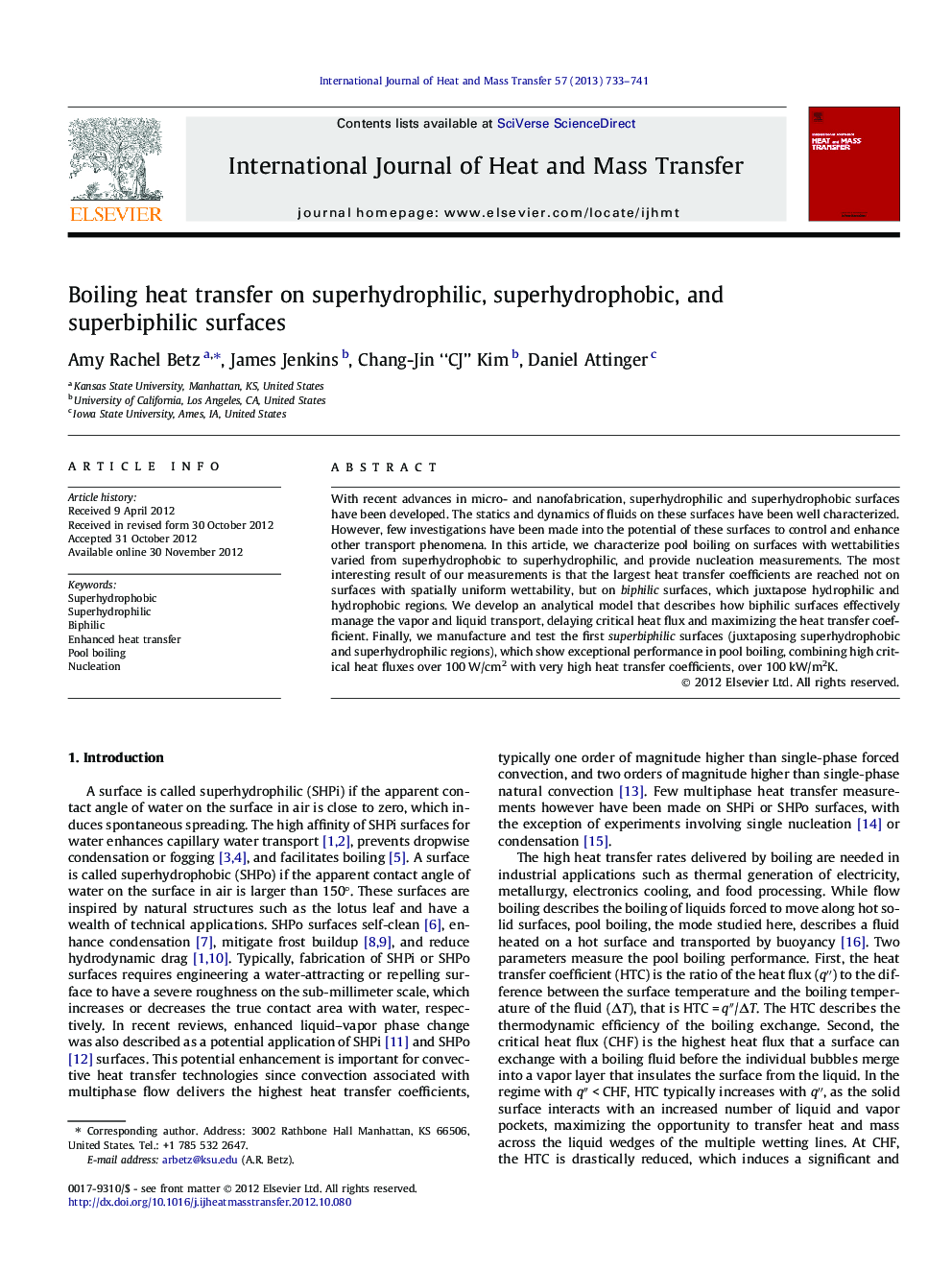| Article ID | Journal | Published Year | Pages | File Type |
|---|---|---|---|---|
| 7059112 | International Journal of Heat and Mass Transfer | 2013 | 9 Pages |
Abstract
With recent advances in micro- and nanofabrication, superhydrophilic and superhydrophobic surfaces have been developed. The statics and dynamics of fluids on these surfaces have been well characterized. However, few investigations have been made into the potential of these surfaces to control and enhance other transport phenomena. In this article, we characterize pool boiling on surfaces with wettabilities varied from superhydrophobic to superhydrophilic, and provide nucleation measurements. The most interesting result of our measurements is that the largest heat transfer coefficients are reached not on surfaces with spatially uniform wettability, but on biphilic surfaces, which juxtapose hydrophilic and hydrophobic regions. We develop an analytical model that describes how biphilic surfaces effectively manage the vapor and liquid transport, delaying critical heat flux and maximizing the heat transfer coefficient. Finally, we manufacture and test the first superbiphilic surfaces (juxtaposing superhydrophobic and superhydrophilic regions), which show exceptional performance in pool boiling, combining high critical heat fluxes over 100Â W/cm2 with very high heat transfer coefficients, over 100Â kW/m2K.
Related Topics
Physical Sciences and Engineering
Chemical Engineering
Fluid Flow and Transfer Processes
Authors
Amy Rachel Betz, James Jenkins, Chang-Jin “CJ” Kim, Daniel Attinger,
